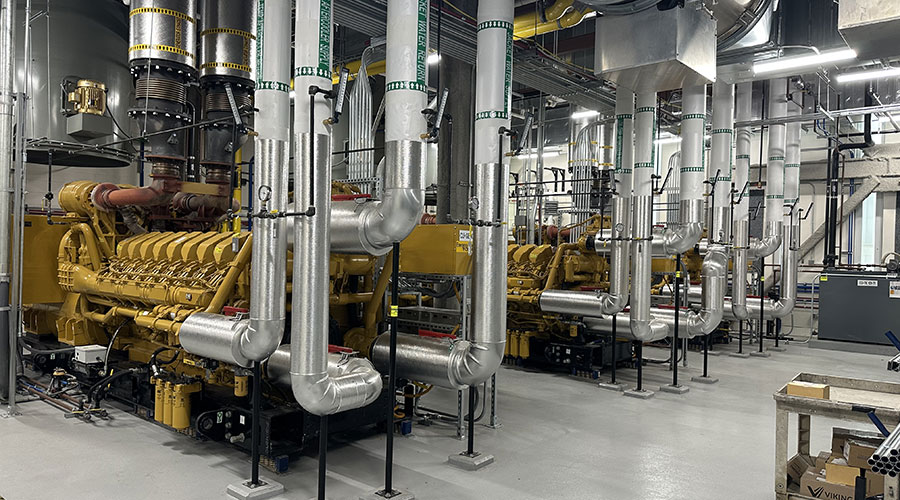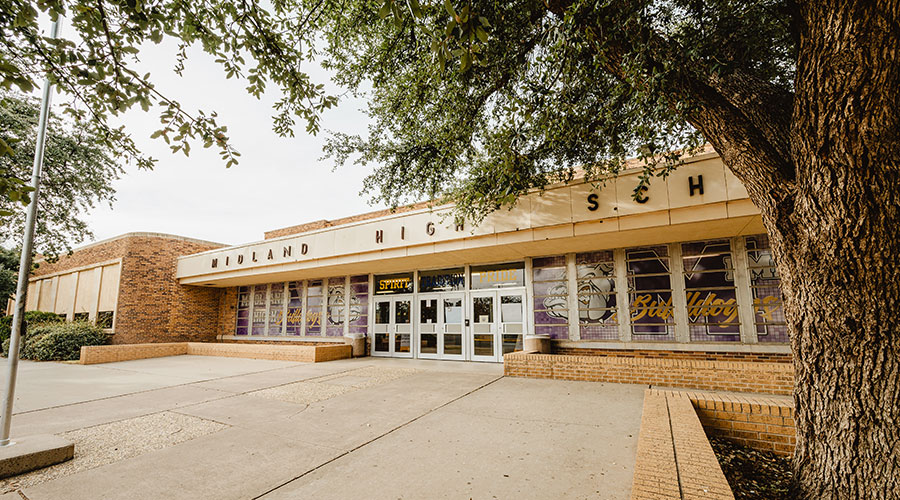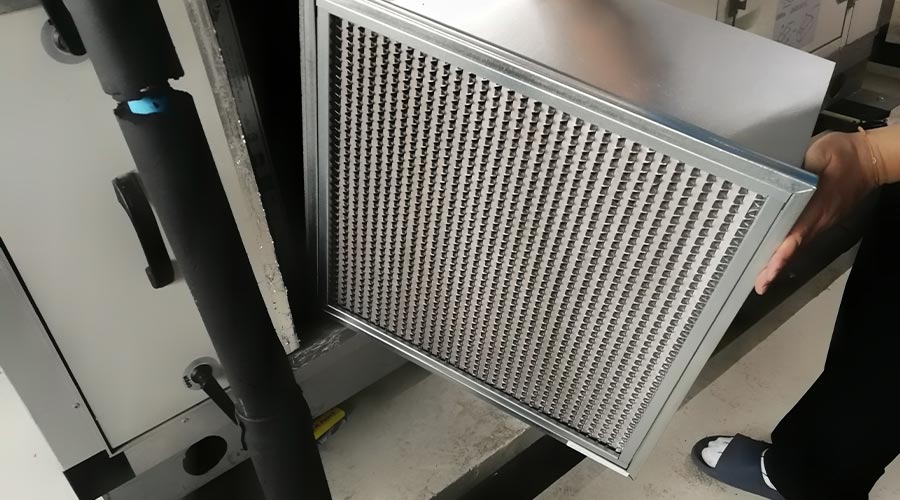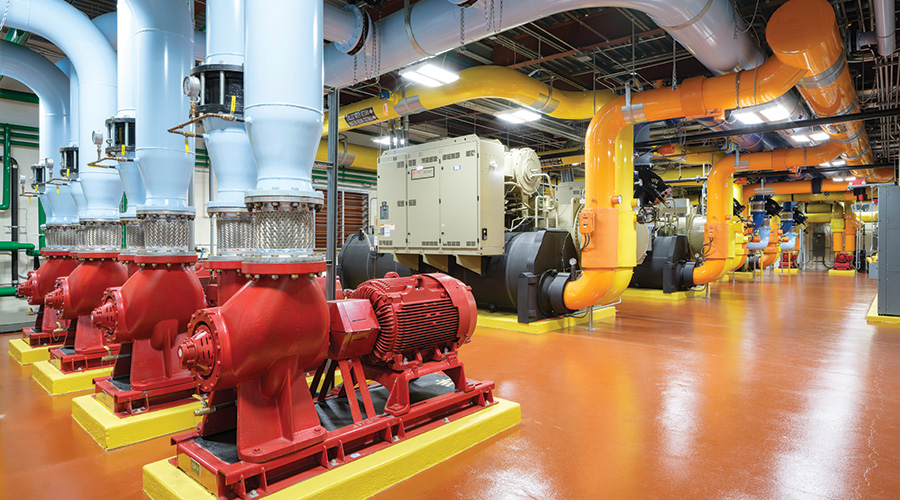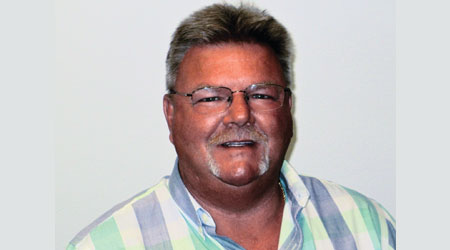 Coordination among vendors, contractors, event goers, and staff, as well as weekly meetings and planned deliveries, can lead to greater project success.
Coordination among vendors, contractors, event goers, and staff, as well as weekly meetings and planned deliveries, can lead to greater project success.HVAC: Tackling the Repair-or-Replace Dilemma
Career experiences and training equip manager with tools and skills to deliver a successful HVAC system upgrade
By Ryan Berlin, Managing Editor
As facilities and systems age, deferred maintenance becomes a bigger problem. When maintenance and engineering managers do not address maintenance issues effectively, the affected equipment becomes more inefficient and more expensive to maintain. At some point, managers need to make the decision to replace existing equipment in order to create a more energy efficient facility. Joseph Latteo, director of facilities at the 2 million square foot Bell County (Texas) Expo Center, faced the repair-or-replace decision as the facility’s aging and inefficient outdoor modular plant and 900-ton chiller plant and heating system approached the end of their performance lives.
Where and when did you begin your career in facilities?
My career in commercial and institutional facilities started in late 1980s when I was part of a special projects team at Fort Hood, Texas. I was a civil service employee with the Texas Department of Engineering and Housing.
Throughout your career, what credentials, certifications, licenses and other professional designations have you earned?
I have earned multiple credentials throughout my career, including: the Project Management Professional credential through the Project Management Institute; the Certified Professional Contract Manager credential through National Contract Management Association; and the Certified Facility Manager through International Facility Management Association. In addition I have also earned my license in HVAC from the Environmental Protection Agency.
What are your daily responsibilities? What is your involvement with maintenance and engineering?
My daily responsibilities include all things facility related for 2 million square feet of public and local government facilities. I manage 70 staff members, along with vendors, contractors, and suppliers. I work with elected officials and senior executive staff. My involvement can be technical troubleshooting with staff to design strategizing with architects or engineers. I also spend a great deal of time in purchasing compliance and delivery method specification writing. Two jails and a juvenile detention facility also require much of my time with staff, as they are unique 24/7 facilities compared to an administration-type facility.
What are the most rewarding and challenging parts of your job?
By far the most rewarding part of my job is developing and teaching the next generation of staff. In facilities management, we encounter hundreds of decisions monthly. Passing the knowledge of how to deal with issues and how to always think about the big picture is most rewarding. The most challenging parts are pretty typical — scheduling and balancing a budget. For me, it sometimes can be dealing with 40 different elected officials.
What has been the best piece of advice you received in your career?
This is easy: “You need to learn to grow thick skin.” This was advice given to me early on in my career when I first became a director of facilities. I was very good at what I do, but I took things very personally. Sometimes, new equipment breaks, or water intrusion from a flood is out of your control. You will be blamed for things out of your control, and change is not easy for anyone. Innovations come with a lot of change.
What do you wish you had known before starting a career in facilities?
I wish I knew how much computers would become a part facilities management. This is how we start our day now —looking at graphics on your energy management system, checking work orders on your CMMS, and looking at alarms on security doors, fire alarms and elevators. Even our maintenance techs all utilize laptops when on a roof, in a basement or in the truck. Work order systems also are on all mobile devices.
Describe the HVAC project at the Bell County Expo Center.
The purpose of our HVAC project was to replace an older 900-ton chiller plant and heating system under expo seating indoors with an outdoor modular plant. This was a two-phase project that preceded the building of a new indoor, climate-controlled equestrian arena. On a small footprint now sits a 1,500-ton magnetic-bearing chiller plant with 7 million Btus of heating. Heating and cooling the entire complex of buildings with power conditioning and lots of energy savings running in a lead lag sequence.
Power conditioning is done with a frequency drive — hertz (Hz) ramp up and down depending on the demand. For example, when an outlet in your house has 120 volts at 60 Hz, the 60 Hz is always available whether you have five things plugged in or one plugged in. The power condition ramps up or down, lowering the hertz to save energy. If demand was low, hertz would only run at 30 Hz, saving energy by slowing down the AC pulse. The normal resident AC Pulse is 60.
Lead lag means that all three 500-ton chillers are controlled as one with an energy management controls program. If demand only calls for 300 tons, only one chiller will come on. They rotate between chiller A, B, and C each time they come on to equally share run time. At 8 a.m., it’s BCA. At 10 a.m., they run CAB, and at noon, they run ABC. If the chillers always ran in ABC order, then A would wear out very fast.
What factors led to the decision to make these upgrades?
After 28 years, it looked certain that funding to expand the Bell County Expo Center and add a new equine facility was finally going to happen. The historic information in annual maintenance costs were creeping up. Knowing that the older equipment was not energy efficient and needed to be expanded to cover a new facility, the decision was made to invest in a new energy-efficient plant for the entire complex.
How has the upgrade benefited the facility?
The efficiency has been great and has reduced our costs by 50 percent in energy spending. The easy access to work in and service the plant has been great. Also having the redundancy capacity has been a great new addition.
How did the expo center’s operations and activities affect the planning and operation of the project?
One of the great successes with this project was coordination between all parties – vendors, contractors, event goers, and expo staff personnel. Weekly meetings and planned delivery were the key to avoiding interruptions of scheduled events. With an event center like this, there could be more than 300 events in multiple buildings on this site throughout the year. Handling that coordination was the tricky part. High school and college graduations were the hardest events to work with. Sometimes, there were two a day. Full parking lots and standing room only was also a stressor on temporary cooling equipment. Overall expo operations and activities were not affected because of unified partnering through multiple departments and personnel.
What role did you and your staff play in the planning and specification for this project?
My role started at the conception of this project. I was part of the selection committee for professional services. Myself and some other staff worked on a regular basis with engineers and architects and then advertised for the bidding process. Once a contractor was selected, my daily responsibility was to oversee the entire project, from foundation to commissioning, both phases were my direct responsibility.
What lessons did you and your department learn from this project?
The most valuable lesson was taking the time to coordinate the schedule of events. It made for a smooth project. Because of everyone having a vested interest and talking through the things like traffic control in the parking lot, the timing of deliveries, and when to shut down power, it created a unified effort to know the schedule.
Has the project delivered the intended results?
Yes, the project is allowing the redundancy we wanted, saving lots of energy dollars, and allowing us to receive rebates, along with providing a reliable system we can depend on.
Related Topics:









